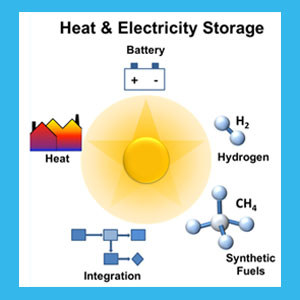Speaker
Mr
Marc Uffer
(Diamond Lite SA)
Description
As the percentage of the traditional electrical grid power supplied by renewable sources such as wind and solar energy grows, energy storage solutions are required in order to maintain stable grid performance. These solutions have to provide both generation capacity for periods of low renewable generation or peak demand, and storage capacity for peak periods such as high wind periods and mid-day with low cloud cover. Specific areas of the world such as Germany and California are already requiring energy storage as part of new renewable installations based on these issues.
Hydrogen from electrolysis is a promising technology for all of the above applications, also providing potential linkages between other infrastructures such as transportation to provide flexibility in the overall solution. Hydrogen has the capability to store massive amounts of energy in a relatively small volume, with no carbon footprint when generated from electrolysis of water and renewable energy. Electrolysis can also provide ancillary services (e.g., load shifting and frequency regulation) for grid stability, resulting in multiple value streams. The hydrogen produced can be injected into the natural gas pipeline, in the production of high value chemicals such as ammonia, in upgrading of biogas, or used as a transportation fuel.
Europe in particular has been committed to these pathways and making heavy investment in both materials research and system design and development as well as technology demonstration. In Germany, hydrogen is looked upon as a key part of the energy storage solution under “Energiewende,” their national sustainable energy transition plan. Hydrogen provides a unique link between the electric and gas grid infrastructures (often referred to as “PtG= Power-to-Gas”).
Proton exchange membrane (PEM) electrolysis is attractive for hydrogen generation applications because of the lack of corrosive electrolytes, small footprint, and ability to generate at high hydrogen pressure, requiring only water and an energy source. The major market challenge for PEM competing directly with traditional liquid alkaline electrolysis technology has been product scale. However, that obstacle is decreasing as PEM-based products have increased in output. Several companies have already announced development plans for commercial megawatt (MW)-scale PEM electrolysis units in the 2014-2015 timeframe and there have been recent announcements of large scale renewable energy storage projects based on electrolysis.
This presentation will provide information about Proton OnSite’s PEM electrolysis plants installed in Europe by Diamond Lite as a system integrator for different applications, and PtG projects in Switzerland to be completed by end of 2014. Information will be presented on Proton OnSite’s MW product development effort, including a new large format PEM stack that achieves substantial cost reduction. These reductions were achieved through research in bipolar plates and the membrane electrode assembly, and additional improvements are possible based on Proton’s ongoing projects, which will be discussed. Endurance and variable load testing will be presented.
Author
Mr
Marc Uffer
(Diamond Lite SA)
Co-author
Dr
Hans Jörg Vock
(Diamond Lite SA)

